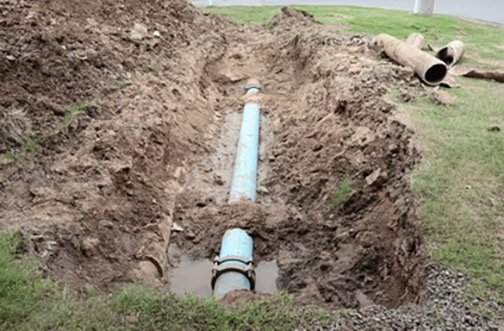
A failing sewer line may be the sneakiest drainage problem to have in your home, because when a sewer line is failing, it is easy to mistake the problem for a less severe plumbing issue. This is why sewer line failures are often discovered after they have caused massive damage to the home, notes 1907 Property Management.
But it is not that sewer line failures happen without any external signs. Rather, it is because those signs are missed or misinterpreted. In most cases, a sewer line that is on the verge of failure will initially present signs and symptoms that mimic the signs of a minor drain clog.
The result is that those telltale signs of the impending disaster are either overlooked or the problem is not addressed adequately. What eventually happens is the problem blows up into a “sudden” sewer line emergency in the home. But the signs were there all along.
What are the common signs that your sewer line may be on the edge of failure? How do you pinpoint the root cause of the sewer line issues, and what are the most effective solutions for the problem? This post will answer those questions in detail.
Sewer line failure and why it happens
Your sewer line is the large underground pipe that transports wastewater (blackwater and greywater) from your home into the city sewer lines. All the drainage pipes that collect used-up water from your plumbing fixtures and appliances feed into the sewer line.
If this critical piece of plumbing fails, the impact can be disastrous. A sewer line is said to have failed when it cannot transport wastewater because the line is blocked, broken, or collapsed, leading to sewer backups in the home, as well as property damage.
Here are some of the common causes of sewer line breaks, blockages, and collapse:
- Buildup of debris inside the line due to the wrong things being dumped into the drains
- Aging/corrosion causes the line to become brittle, leading to pipe breaks and collapse.
- Construction errors, such as improperly compacted soil, can lead to sewer line collapse.
- Erosion, flooding, and water leaks are destabilizing the soil to cause sewer line collapse.
- Heavy vehicles and machinery compress the soil above the line and cause breaks.
- Tree roots find a way to penetrate the line and cause breaks and blockages.
- Ground movement due to house settling and seismic activities is causing the pipe to shift.
8 signs of sewer line failure
Sewer line failures are best detected and resolved before they happen. That is the best way to avoid the financial cost and health problems that follow this plumbing emergency. What are the signs of an impending sewer line failure in your home?
- Multiple slow drains
A single slow drain probably means there is a blockage in the fixture’s dedicated drainage line. But if multiple drains are slow at once, the problem is most likely in your sewer line.
- Chronic drain clogs
A chronically slow drain that resists every solution is more than likely a sign of deeper issues in your plumbing system. The root cause of the problem can often be found inside your sewer line.
- Sewage odors in the home
The smell of raw sewage inside your house or around the yard means that your sewer line is either blocked or broken. The blocked/leaky section is forcing gases to exit through the toilet or leak out into the soil.
- Overflowing toilets
An overflowing toilet is often a precursor to a sewer backup in your home. If the toilet is not overflowing because of a blockage in the toilet drain, the root of the issue is in your sewer line.
- Pest infestation
If your sewer line is broken and about to fail, it will discharge wastewater into your yard, and that will attract all kinds of pests – roaches, rats, mosquitoes, centipedes, snakes, etc. – to your property.
- Soggy yard
If the ground directly above the location of your sewer line is perpetually wet or soggy, your sewer line may be broken and discharging wastewater into the soil.
- Lush vegetation in the yard
A broken sewer line will also cause a section of your lawn to be greener than the rest, because of the nutrient-rich wastewater that is being discharged into the area.
- Low spots in the yard
If your sewer line is broken and leaking wastewater, it can create low spots or depressions in the yard. These low spots may eventually become a sinkhole.
What should you do if any of these signs are present in your home? You need to talk to a professional plumber ASAP and have them investigate the problem to know if your suspicions are justified. The plumber will typically want to conduct a sewer camera inspection.
This inspection uses a specialized camera that allows plumbers to do an up-close examination of your sewer line without the need to dig up the pipes. Based on the outcome of this inspection, your plumber will recommend the best solution for your home’s sewer line problems.

